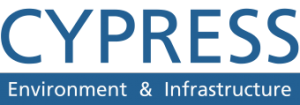Coastal regions are invaluable ecosystems, serving as essential habitats and vital hubs for human communities. However, coasts confront a multitude of challenges, ranging from erosion and rising sea levels to pollution and developmental pressures.
Coastal engineering plays a pivotal role in effectively managing these dynamic and fragile areas. Within coastal engineering, a critical choice often arises between two distinct approaches – hard engineering and soft engineering.
These two methods provide diverse solutions for constructing infrastructure and protecting coastlines. Hard engineering employs rigid, man-made structures, while soft engineering advocates natural processes and adaptability.
But what is the difference between hard and soft engineering? When should one be favored over the other in a coastal project?
In this article, we will delve into the contrasting techniques, costs, and trade-offs of hard engineering versus soft engineering. We’ll shed light on how to best protect coastlines and balance environmental and economic needs. Get to know the differences between these fundamental coastal engineering strategies.

What Is Hard Engineering?
Hard engineering, also known as structural engineering, represents a category of methods and strategies employed by humans to address and manage natural and environmental challenges.
This approach involves the implementation of tangible, often man-made, solutions aimed at exerting control over and reshaping the environment according to human needs and objectives.
In essence, hard engineering is a testament to human ingenuity and engineering prowess, as it seeks to harness the forces of nature for our benefit. It is a methodical and proactive response to environmental issues, often necessitated by concerns such as flooding, erosion, or habitat protection.
To gain a more comprehensive understanding of the concept of hard engineering, let’s delve into some prominent examples that showcase its practical application. These include large-scale infrastructure projects like dams, seawalls, and concrete barriers.
These structures are meticulously designed and engineered to serve as robust defenses against the formidable and sometimes unpredictable forces of nature. By analyzing these examples, we can appreciate the sheer scale and complexity of hard engineering projects and how they impact the natural world.
Advantages of hard engineering
Enhanced structural stability
A key benefit of hard engineering is its ability to provide superior structural stability, achieved through rigorous engineering design, durable materials, and strict safety standards.
Here at Cypress Environment & Infrastructure, we specialize in designing sturdy structures like seawalls, dams, and concrete barriers that are fortified to withstand time and endure severe natural forces. This helps enhance infrastructure longevity and safety, especially in disaster-prone areas.
Flood and erosion control
Another significant advantage of hard engineering lies in its effectiveness in flood control and erosion management, particularly in flood-prone regions and coastal areas susceptible to erosion.
Our engineers design structures like levees, seawalls, and embankments that are purpose-built to mitigate damage from flooding and coastal erosion.
They serve as robust barriers that reduce the risk of inundation and erosion-related disasters, safeguarding infrastructure, farmland, and communities. Additionally, they protect coastal zones, preserving shorelines and natural habitats by managing the erosive forces of the sea.
Challenges and limitations of hard engineering
Hard engineering, with its structural and man-made solutions, offers robust responses to environmental challenges, but it also has a set of challenges and limitations.
Environmental impacts
While hard engineering solutions are often effective in protecting human interests, such as properties and infrastructure, they can significantly impact the natural environment. Habitat disruption is a common consequence, as the construction of structures like seawalls, dams, and concrete barriers can displace local flora and fauna.
Furthermore, these alterations to the landscape can lead to long-term changes in ecosystems. This disruption can affect biodiversity and potentially lead to a loss of natural habitats.
Additionally, the alteration of water flow patterns and sediment transport that often accompanies hard engineering interventions can exacerbate issues downstream, potentially leading to increased erosion in other areas.
Cost considerations
Hard engineering projects, while effective, often entail significant financial burdens. Initial construction costs, encompassing materials, labor, and engineering expertise, can be substantial.
Moreover, long-term maintenance and upkeep expenses are critical, as structures like seawalls and flood defenses require ongoing monitoring and repairs from us to maintain their functionality.
Evaluating the environmental impacts and financial considerations of hard engineering poses a complex and challenging task for us as engineers, policy-makers, and project planners. Therefore, a thorough assessment of these challenges is vital while we consider the implementation of hard engineering solutions in civil projects.

What Is Soft Engineering?
Soft engineering takes a natural and adaptive approach to environmental challenges, emphasizing cooperation with natural processes rather than opposition. It aims to work in harmony with the environment and employs gentle, eco-friendly strategies, focusing on solutions that are sustainable over the long term.
Soft engineering projects include beach nourishment, dune restoration, and marsh creation, which restore and enhance natural features and habitats.
This approach acknowledges the interconnectedness of ecosystems. It strives to maintain a balanced, sustainable relationship between humans and the environment, making it a harmonious approach to problem-solving.
Advantages of soft engineering
Sustainability and environmental friendliness
One notable advantage of soft engineering is its sustainability and eco-friendliness. At Cypress, we prioritize designing projects that cooperate with natural processes, minimizing harm to the environment.
By supporting natural ecosystems, our soft engineering work benefits various wildlife species and can counteract habitat destruction, often associated with hard engineering projects.
Adaptability to natural processes
Soft engineering is highly adaptable to changing environmental conditions, making it a versatile and practical choice for various scenarios. We embrace natural processes and design engineered solutions that can evolve along with the environment.
In contrast to hard engineering, which often demands ongoing maintenance, our soft engineering projects may self-adjust over time, potentially providing sustainable, cost-effective long-term solutions.
Challenges and limitations of soft engineering
Effectiveness in extreme conditions
While soft engineering solutions excel in many scenarios, they may have limitations when faced with extreme environmental conditions. In areas prone to severe storms, high-energy wave action, or intense coastal erosion, the natural features or ecosystems restored or enhanced by soft engineering measures can be vulnerable.
However, it’s important to note that even in extreme conditions, soft engineering solutions can offer benefits by attenuating wave energy and reducing the speed of erosion. Moreover, while they may not provide an impervious shield, they contribute to long-term shoreline resilience.
Initial costs and maintenance
Soft engineering projects are often associated with lower initial costs compared to their hard engineering counterparts. This can make them an attractive option, especially for projects with budget constraints.
However, it’s essential to recognize that these cost savings can be deceptive. While the upfront expenditure may be lower, soft engineering measures sometimes require ongoing maintenance and management to remain effective.
These maintenance costs can accumulate over time and should be factored into the overall project budget.
Choosing the Right Approach
In civil engineering, the choice between hard and soft engineering depends on several critical factors during project planning:
- Project goals – Determine the primary project objectives, whether it’s immediate stability or environmental preservation.
- Location – Consider the geographical context, with hard engineering favored in areas prone to severe environmental challenges.
- Environmental impact – Assess the potential effects on ecosystems and natural processes, favoring eco-friendly soft engineering where possible.
- Community input – Engage with communities and stakeholders to balance their needs with environmental protection.
- Hybrid approaches – Often, the most effective solution is a hybrid approach that combines the strengths of both hard and soft engineering. This integrated approach aims to protect infrastructure and ecosystems simultaneously.

Conclusion
Hard and soft engineering represent two distinct yet complementary approaches in civil engineering, each with its unique advantages and challenges.
This article explored what is the difference between hard and soft engineering, illuminating the contrasting techniques, trade-offs, and costs of these fundamental methodologies. Our civil engineers apply these concepts to effectively manage coastlines and foster ecological harmony through integrated hard and soft engineering. At Cypress Environment & Infrastructure, our engineers balance these approaches to create sustainable and resilient infrastructure while preserving natural systems.
